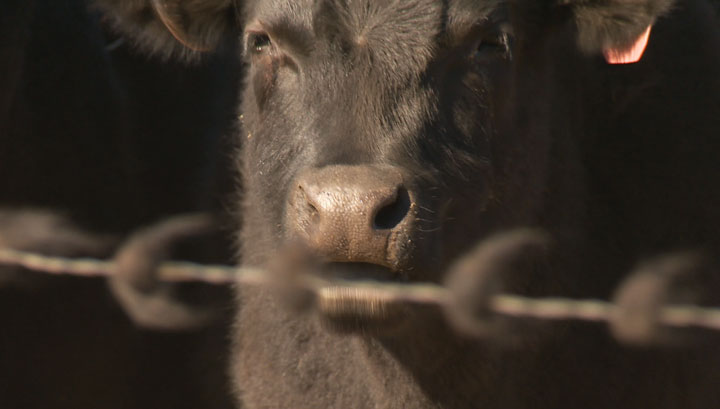The Western Stock Growers Association says the bovine tuberculosis outbreak in Alberta and Saskatchewan has not harmed the beef industry.

Dr. Bill Newton, the organization’s honorary president, said Wednesday that Canadian beef is still going to slaughter and added international trade has not fallen off.
READ MORE: What is bovine tuberculosis?
“For those 18 individual producers and all of the in-contact herds that had to go through quarantine and testing, it certainly has caused considerable hardship. But for the industry, not much,” he told News Talk 770’s Danielle Smith.
“Fortunately, the market has actually strengthened since last fall … and even today it’s fairly firm. So, not the huge negative that there could have been.”
LISTEN: Western Stock Growers Assoc. president weighs in on bovine TB outbreak
His comments come a day after the Alberta Beef Producers said the majority of “contact herd” cattle in last fall’s bovine TB outbreak had been released from quarantine with no restrictions.

Get daily National news
In a statement Wednesday, the CFIA said “contact herds” refers to 11 herds in which the cattle had “fence-line contact” but did not co-mingle with animals from the infected herd.
Ten of those herds were in Alberta and one was in Saskatchewan.
The group said cattle released after a negative test result carry no higher risk than other Canadian animals, suggesting the risk may actually be lower since the whole herd underwent testing.
Watch below from November 2016: Quinn Campbell spoke to the owner of the cow at the centre of Alberta’s bovine tuberculosis outbreak, who said the ordeal has been devastating.

About 26,000 cows were quarantined on dozens of ranches as a result of the outbreak and around 10,000 were slaughtered to ensure the disease did not spread.
“We were fortunate to capture this incidence of tuberculosis in the early stage, before it had spread widely, even though there was extensive comingling with the affected herd,” Newton said.
“It looks like we caught it before it got away on us, got out in the wider population.”
Newton said bovine TB can spread through direct and indirect animal contact as well as through exposure to wildlife. He said while officials have not confirmed the source of the infection, they do have a clear idea of how the disease typically spreads, adding that it can live in soil and bedding packs for a limited period of time, but is destroyed by sunlight and warm temperatures.
READ MORE: Bovine TB outbreak declared a disaster by Alberta government
He said the Canadian beef industry has not lost its TB-free status as result of the outbreak, but admitted that although most of the “contact herd” cattle have been released, there is still more testing that will have to be done in the fall.
“The cows are too close to calving to do these tests now,” he said. “And then with the young calves at foot… it was decided to do more testing this fall. So there will be another flurry of activity this fall.”
With files from Erika Tucker

Comments